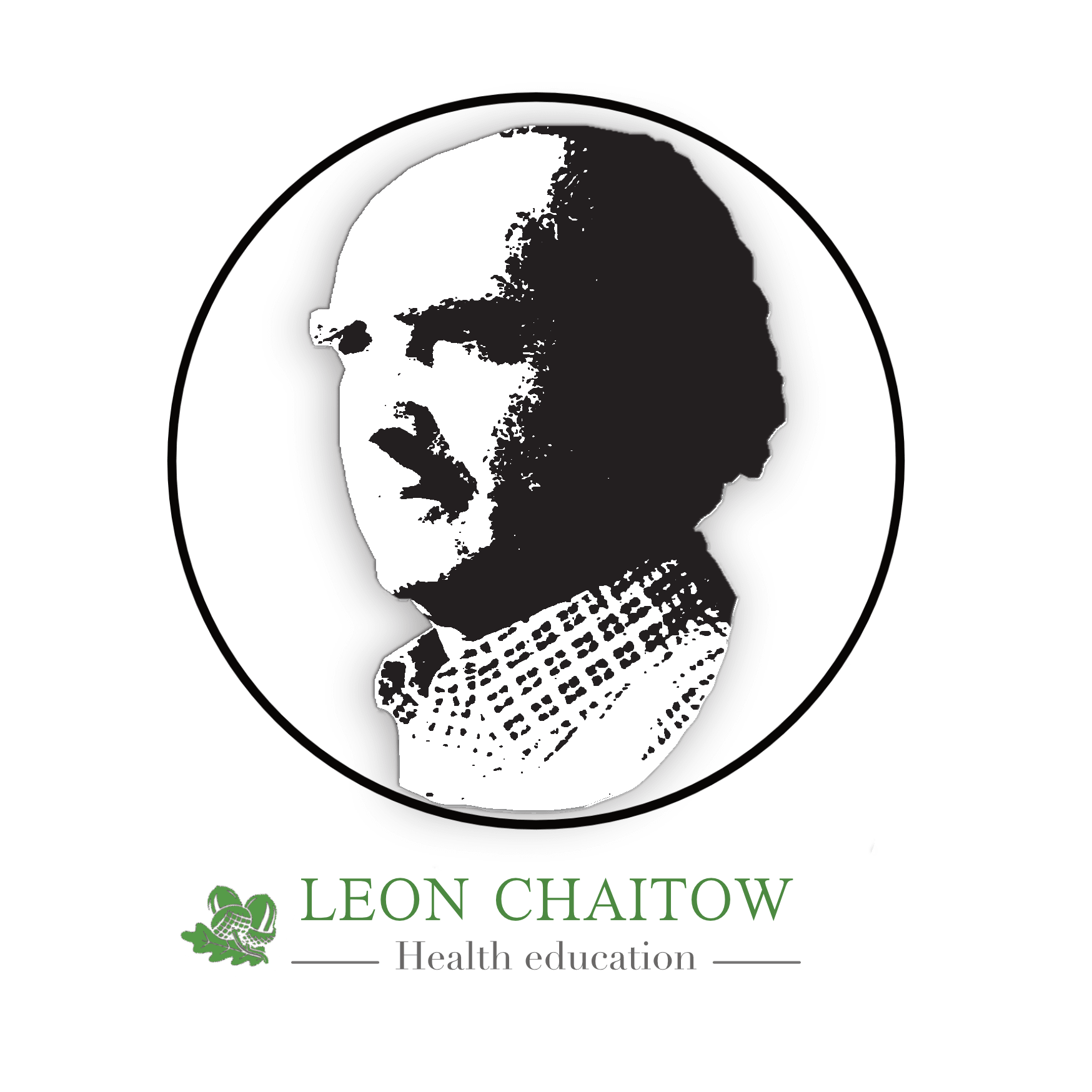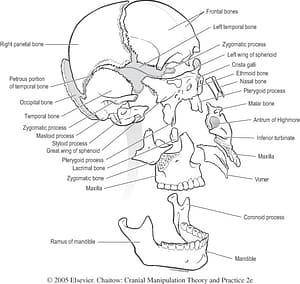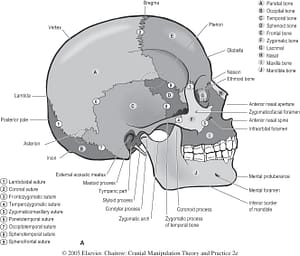A study published in the American Journal of Osteopathic Medicine (December 2011) confirms what many osteopaths have claimed for many years, that the method known as 4th ventricular compression – or 4VC (see below) results in statistically significant physiological changes.
The study evaluated two well known techniques, described in the study as a/ ‘augmentation’ and b/ ‘suppression’ – compared with a ‘sham’ treatment method
These two words describe methods that either attempt to :
a/ Enhance/reinforce the flexion/extension motions at the sphenobasilar symphysis. The method involved: ‘using the standard vault hold. With the participant lying supine on a table, the operator (S.T.S.) sat 8 to 10 inches away from the head of the table. With forearms resting comfortably on the head of the table, he then lightly contacted the sides of the participant’s head with both hands, using the palmar surface of all his fingers and palms but not the thumbs. The index and middle fingers were placed bilaterally on the greater wings of the sphenoid bones, while the ring and little fingers were placed on the lateral angles of the occiput. The operator encouraged both flexion and extension by enhancing the motion of the sphenoid and occiput bones with his own hands.’ (Nicholas & Nicholas 2008)
or
b/ Reduce/retard those motions, by means of ‘prohibiting flexion movement and enhancing extension movement of the cranial base and the petrous portions of the temporal bones’
The findings of the study concludes that:
These and numerous other cranial methods, together with a background that evaluates the theoretical models and practical evidence, are detailed in my book :
CRANIAL MANIPULATION : THEORY & PRACTICE
NOTE
- 5 CHAPTERS + APPENDICES + VIDEOS – ARE FREE TO DOWNLOAD
OR
- DOWNLOAD THE WHOLE BOOK (see chapter headings below) for
- $15.00/£10
- https://leonchaitow.com/cranial-manipulation-theory-practice/
CONTENT
- 1. A brief historical perspective. FREE TO DOWNLOAD
- 2. Cranial fundamentals revisited
- 6. Cranial movement: mechanical and subtle
- 7. Cranial bones: assessment and manipulation
- 8. Cranial implications of muscular and fascial distress
- 9. Assessment and treatment of key cranially associated muscles
- 10. Positional release and cranial pain and dysfunction
- 11. Cranial therapy and dentistry. FREE TO DOWNLOAD
- 12. Clinical applications of cranial manipulation
- Exercises: refining cranial palpation skills FREE TO DOWNLOAD
- Appendix 1. Soft tissue manipulation FREE TO DOWNLOAD
- Appendix 2. Cranial treatment and the infant FREE TO DOWNLOAD
- Index
REFERENCES
Nicholas AS, Nicholas EA, eds. Atlas of Osteopathic Techniques. Philadelphia, PA: Lippincott Williams & Wilkins; 2008:475-495.





